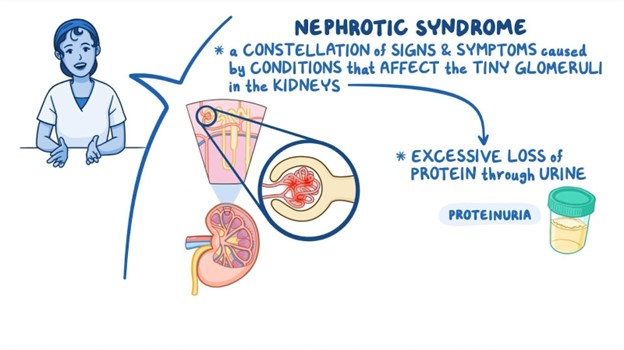A nurse is providing teaching to a school-age child who has a new diagnosis of type 1 diabetes mellitus. Which of the following statements by the child indicates an understanding of the teaching?
"I can store unopened bottles of insulin in the freezer.
I should not take my regular insulin when I am sick."
"My morning blood glucose should be between 90 and 130.
I should eat a snack half an hour before playing soccer
The Correct Answer is D
A) "I can store unopened bottles of insulin in the freezer."
This statement is incorrect. Insulin should not be stored in the freezer. Insulin should be stored in the refrigerator, and the currently used vial can be kept at room temperature for up to 28 days to avoid the discomfort of injecting cold insulin.
B) "I should not take my regular insulin when I am sick."
This statement is incorrect. When a person with type 1 diabetes is sick, it's important to continue taking insulin. In fact, during illness, blood sugar levels can become more difficult to manage, and insulin may be needed in adjusted doses. Skipping insulin during sickness can lead to uncontrolled blood sugar levels and potentially worsen the illness.
C) "My morning blood glucose should be between 90 and 130."
This statement is a good range to aim for in terms of fasting blood glucose levels, but it's not an indication of understanding the teaching about diabetes management as a whole. While this knowledge is important, the statement about eating a snack before playing soccer directly reflects understanding of how to manage blood sugar during physical activity.
"D) I should eat a snack half an hour before playing soccer."
Explanation:
Managing blood sugar levels is crucial for individuals with type 1 diabetes, especially when engaging in physical activities like playing soccer. Eating a snack before playing helps prevent hypoglycemia (low blood sugar) during exercise. Physical activity can cause the body to use up glucose faster, potentially leading to low blood sugar levels, and having a snack before exercise can help maintain stable blood sugar levels.
Nursing Test Bank
Naxlex Comprehensive Predictor Exams
Related Questions
Correct Answer is A
Explanation
A. Position the child laterally
Explanation: When a child is experiencing a seizure, it's important to ensure their safety and prevent injury. Positioning the child laterally, also known as the recovery position, helps keep the airway clear and allows any fluids to drain from the mouth, reducing the risk of aspiration. It also helps prevent the child from choking on saliva or vomit.
The other options are not appropriate actions during a seizure:
B. Using a padded tongue blade is not recommended during a seizure. Placing objects in the mouth during a seizure can lead to injury, including damage to the teeth, jaw, or airway.
C. Attempting to stop the seizure is not within the nurse's control. Seizures are caused by abnormal electrical activity in the brain and should not be interrupted forcefully. Instead, the focus should be on ensuring the child's safety and managing the situation until the seizure stops on its own.
D. Restraining the child's arms is not advisable during a seizure. Restraining can cause harm and increase the risk of injury to the child or others involved. It's important to allow the seizure to run its course while protecting the child from harm.
Correct Answer is B
Explanation
A. Apply cool sterile soaks to the child's head.
Explanation: Applying cool sterile soaks to the child's head would not directly address periorbital edema. Nephrotic syndrome is a kidney disorder that results in proteinuria (loss of protein in urine), leading to fluid accumulation and edema. Cooling the head would not have a significant impact on reducing periorbital edema caused by nephrotic syndrome.
B. Apply warm compresses.
Explanation: Correct Choice. Applying warm compresses can help increase blood circulation and promote the reabsorption of excess fluid causing periorbital edema. Warmth can dilate blood vessels and improve the movement of fluids, potentially alleviating the edema.
C. Encourage the child to eat low protein foods.
Explanation: While dietary modifications might be part of managing nephrotic syndrome, specifically encouraging low protein foods may not directly address periorbital edema. The primary treatment for nephrotic syndrome involves medications to control proteinuria and manage fluid balance.
D. Elevate the head of the bed.
Explanation: Elevating the head of the bed is more commonly used to manage conditions like heart failure or obstructive sleep apnea. It might have some impact on overall fluid distribution, but it's not the most effective measure for reducing periorbital edema caused by nephrotic syndrome.

Whether you are a student looking to ace your exams or a practicing nurse seeking to enhance your expertise , our nursing education contents will empower you with the confidence and competence to make a difference in the lives of patients and become a respected leader in the healthcare field.
Visit Naxlex, invest in your future and unlock endless possibilities with our unparalleled nursing education contents today
Report Wrong Answer on the Current Question
Do you disagree with the answer? If yes, what is your expected answer? Explain.
Kindly be descriptive with the issue you are facing.
